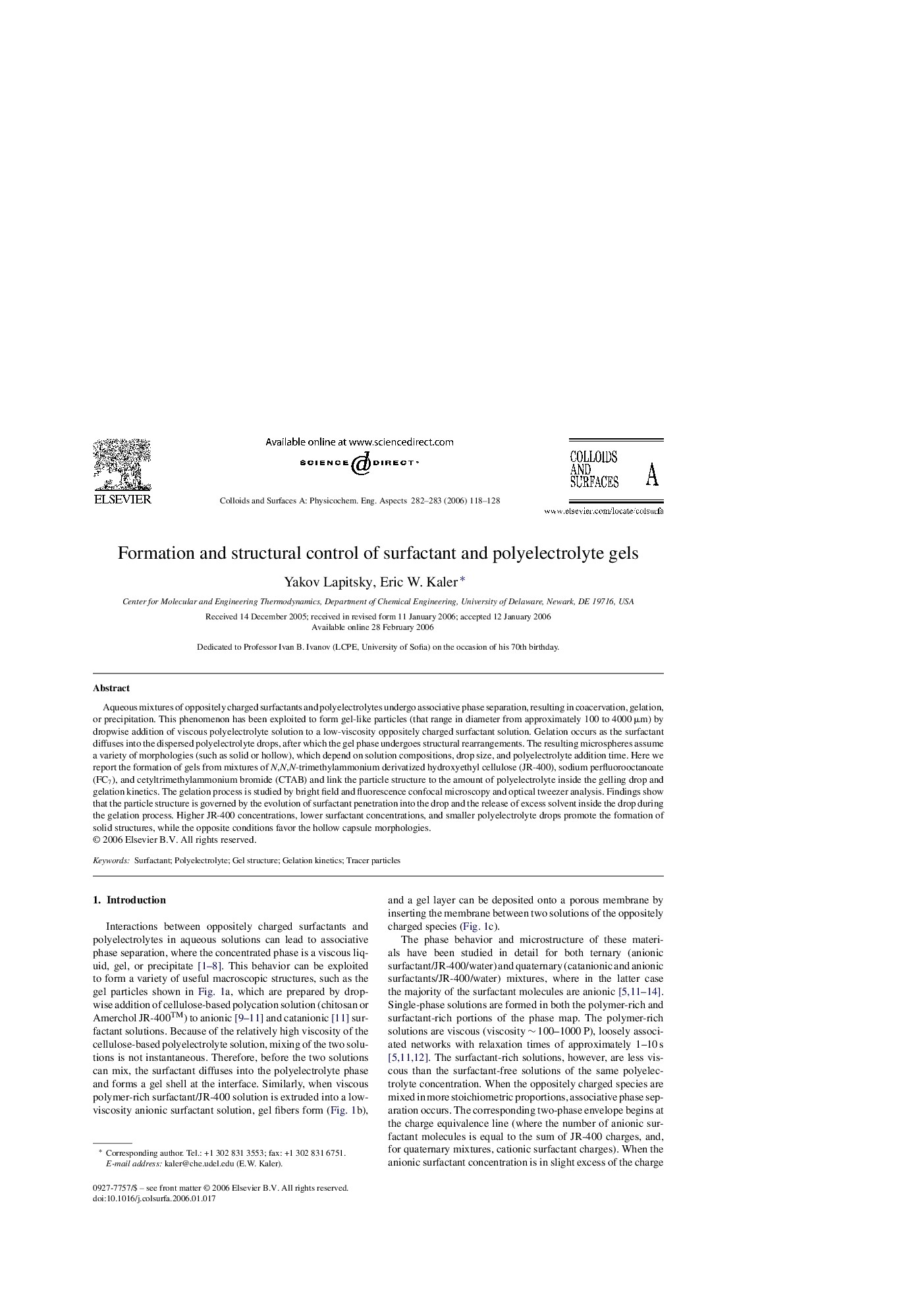| Article ID | Journal | Published Year | Pages | File Type |
|---|---|---|---|---|
| 598380 | Colloids and Surfaces A: Physicochemical and Engineering Aspects | 2006 | 11 Pages |
Aqueous mixtures of oppositely charged surfactants and polyelectrolytes undergo associative phase separation, resulting in coacervation, gelation, or precipitation. This phenomenon has been exploited to form gel-like particles (that range in diameter from approximately 100 to 4000 μm) by dropwise addition of viscous polyelectrolyte solution to a low-viscosity oppositely charged surfactant solution. Gelation occurs as the surfactant diffuses into the dispersed polyelectrolyte drops, after which the gel phase undergoes structural rearrangements. The resulting microspheres assume a variety of morphologies (such as solid or hollow), which depend on solution compositions, drop size, and polyelectrolyte addition time. Here we report the formation of gels from mixtures of N,N,N-trimethylammonium derivatized hydroxyethyl cellulose (JR-400), sodium perfluorooctanoate (FC7), and cetyltrimethylammonium bromide (CTAB) and link the particle structure to the amount of polyelectrolyte inside the gelling drop and gelation kinetics. The gelation process is studied by bright field and fluorescence confocal microscopy and optical tweezer analysis. Findings show that the particle structure is governed by the evolution of surfactant penetration into the drop and the release of excess solvent inside the drop during the gelation process. Higher JR-400 concentrations, lower surfactant concentrations, and smaller polyelectrolyte drops promote the formation of solid structures, while the opposite conditions favor the hollow capsule morphologies.
